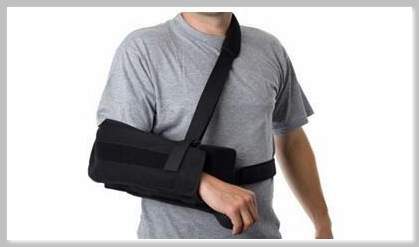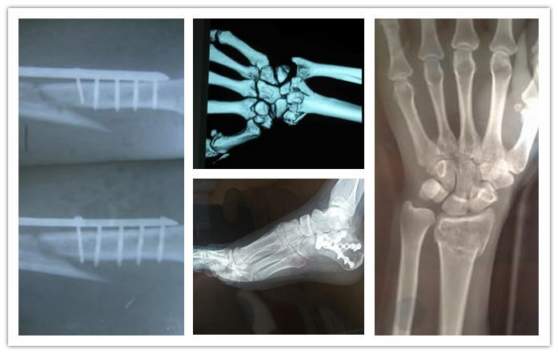
Bones are the most resilient part of a human body. However, they are not invincible. When it receives too much force, it may break. Fracture is a medical term referring to a broken bone. It has various types. One example is the comminuted fracture, which is the most painful and severe type of bone injury. Nonetheless, one can return to his normal activities with proper treatment, recovery, and rehabilitation. What are its causes, symptoms, and treatments?
Types of Bone Fractures
A bone fracture has two major categories including closed and open fractures. A compound or open fracture is when the injury causes a bone to stick out of the skin. This can lead to a complication like an infection. If the skin remains intact, it is a closed or simple fracture.
Under these two main categories are specific types of bone fractures, these are the following:
- A comminuted fracture is an injury resulting to numerous pieces of broken bones.
- A greenstick fracture occurs when one side of the bone bends and is partially broken. This normally occurs in infants and children who have developing bones that are flexible.
- An avulsion fracture is an injury wherein an intense force causes the ligament or tendon to pull and break a certain part of a bone. This typically occurs in the shoulders or knees.
- A traverse fracture occurs when the damage is perpendicular to the axis of the bone.
- An oblique fracture is an injury wherein the bone is broken diagonally.
- A spiral fracture is a bone injury caused by an intense rotating force.
Definition: What is?
As mentioned, a comminuted fracture is an injury resulting to several pieces of broken bones. Depending on its severity, it can either be an open or closed fracture. An open one can lead to a complication since the internal tissues are exposed to the environment. An Infection is a common complication associated to open fractures.
The comminuted fractures will only happen if a bone has received an extreme pressure. To be specific, a minor bone will have this kind of damage if it receives a pressure of about 9 – 13 pounds. Bigger bones, like the femur, are much stronger. A pressure of about 160 pounds is necessary to cause this injury.
Causes:

A bone may break into numerous pieces due to various causes, which are the following:
- Accidents
Most fractures happen due to an accident. However, comminuted fractures will only occur if the accident involves extreme pressure. The common accidents that can inflict a great amount of force are a car crash, falling from a high place, and a gunshot.
- Age and Bone Disease
Even though an extreme force is necessary to break a bone, it may still happen even with low pressure. One reason for this is brittle or weak bones. The common causes of the weakening of the bones are various medical conditions such as bone cancer, osteoporosis, osteosarcoma, and osteogenesis imperfecta.
Another contributing factor of brittle bones is age. As a person grows older, bone deterioration may occur. For women, their bones will start to lose its minerals like calcium after menopause. This is also true for chronic smokers. A common remedy for this is to increase calcium intake.
- Sports and Other Outdoor Activities
Fractures will typically occur if a person does numerous sports and other outdoor activities. A common activity that may result in a comminuted fracture is cycling.
Symptoms:
One can easily detect an open fracture. However, it will take some time to notice a closed one. The following are symptoms commonly observed in patients with the type of fracture.
- This fracture will cause an unbearable pain because of various reasons. First, a number of pain receptors are surrounding the bone. Another possible reason is due to swelling in the surrounding area of the fractures. Muscles will also contact to hold the fractured bone, which results in excruciating pain.
- Because of extreme pain, some people will faint or lose consciousness.
- Inflammation will occur in the surrounding area of the fractures, look for signs such as swelling, warmth, and skin discoloration or redness.
- Due to extreme pain, one may have a hard time moving or carrying certain objects.
Treatment and Recovery:
It is imperative to treat a fracture properly since improper treatment can have a negative impact on a person’s mobility and strength. Treatment for a comminuted fracture is challenging. However, the body has a mechanism that will help repair the damaged bone. Thus, the primary goal of the treatment is to reconnect the broken pieces of bones.
- To diagnose the condition, the doctor will order an X-ray. He may also request a computed tomography (CT) scan to fully analyze the severity of the fracture.
- A surgeon will do an open reduction when the bone fragments are jammed together using surgical nails, wires, plates, and screws. This is necessary to reconnect the broken pieces of bones.
- After the surgery, the area below and above the fracture must be immobilized using a fiberglass cast, splints, and plasters.
- For an injury to a minor structure like the phalanges, buddy wrapping will help immobilize the surrounding area permitting the formation of callus.
- For spinal injuries, traditional approach will most likely fail. A better approach is the vertebroplasty. It is a surgical procedure involving the injection of cement in the broken vertebrae for stabilization.
- Ibuprofen is typically given to relieve pain. It has an effect comparable to the combination of codeine and acetaminophen.
- If an infection develops, the doctor will prescribe antibiotics.
- After surgery, regular check-ups are essential to ensure that the bones are healing properly. If the condition is not healing as fast as it should, your doctor will give additional interventions.
- Physical therapy is also essential. It will help in restoring one’s strength and mobility.
- Crutches are given after surgery. It is imperative to always use them. It will help prevent further damage.
- Compared to regular fractures, comminuted fractures will take longer to heal. Recovery will typically last for several months.

